If you’re searching for how to apply for credit card RBC, chances are you’re looking for a reliable and rewarding credit card option backed by a major Canadian bank you can trust. Whether you’re brand new to the concept of credit cards, an international student trying to build your credit history, a newcomer to Canada navigating the financial system, or simply someone considering switching from another provider, this comprehensive guide is your go-to resource.
Applying for a credit card can feel overwhelming—especially when you’re not sure which card is right for you or how the approval process works. The good news? RBC (Royal Bank of Canada) offers a wide range of credit card options tailored to meet different financial needs and lifestyles, with a relatively simple application process that’s accessible to most Canadians, including those with limited or no credit history.
In this detailed guide, we’ll walk you through how to apply for credit card RBC from start to finish. You’ll learn about the different types of RBC credit cards available, what eligibility criteria you need to meet, and how to choose the card that fits your personal goals—whether that’s earning travel rewards, getting cash back, building a credit score, or managing daily purchases.
We’ll also explore common application mistakes to avoid, how to improve your chances of getting approved, tips specifically for students and newcomers, and how to activate and manage your new RBC card once you receive it. Our goal is not just to help you get approved—but to help you make a smart, informed decision that benefits your financial future.
So if you’re wondering how do I apply for an RBC credit card, or what’s required to get approved, rest assured—this guide simplifies it all. With firsthand examples, practical tips, and step-by-step walkthroughs, you’ll have everything you need to confidently apply and begin enjoying the benefits your RBC credit card has to offer.
Let’s dive in.
Why Choose an RBC Credit Card? A Look at the Benefits
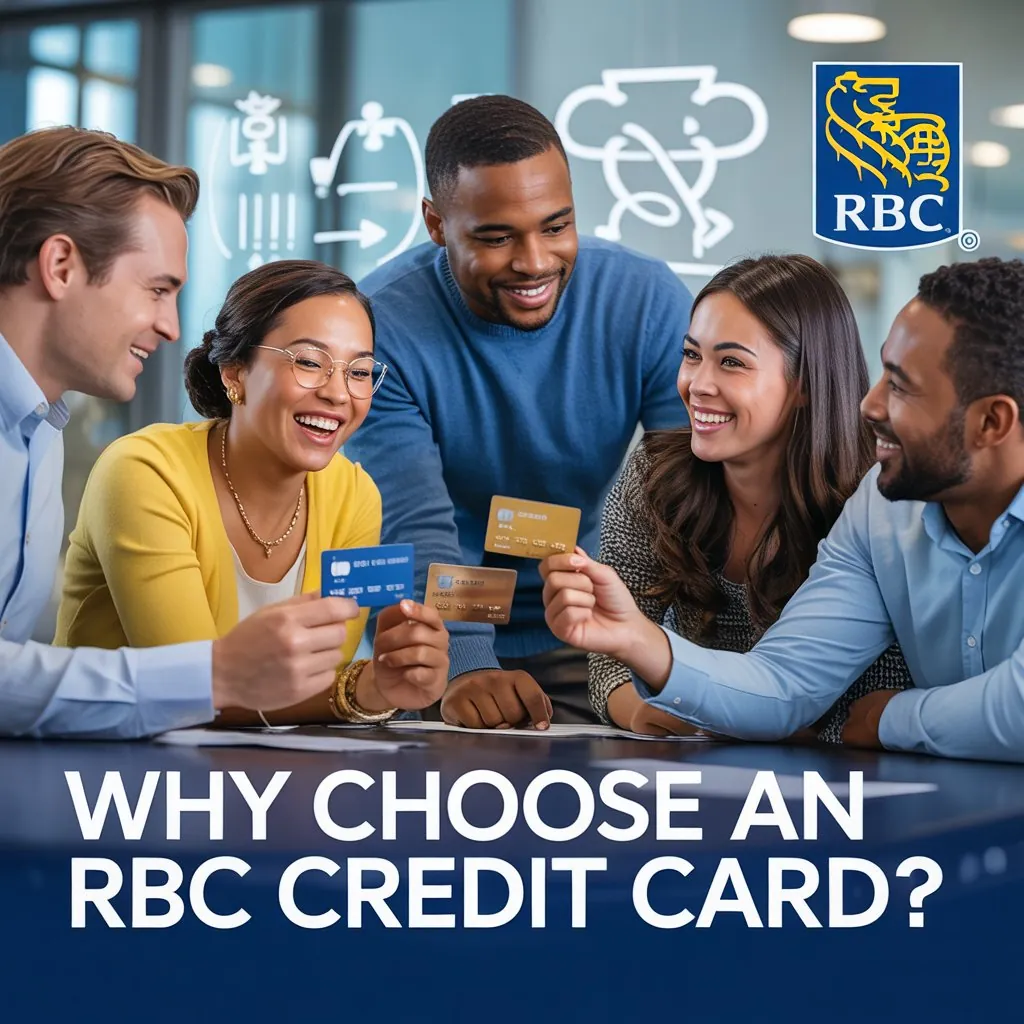
RBC has one of the most diverse and accessible credit card portfolios in Canada. Whether your priority is building credit, earning rewards, accessing travel benefits, or saving on interest, there’s an RBC card for that.
1. A Broad Range of Cards for All Life Stages
RBC offers:
- Student credit cards
- Cash back and rewards credit cards
- Travel cards with airline or hotel affiliation
- Low-interest and balance transfer cards
- Business credit cards
- Cards for newcomers to Canada
- Premium travel and lifestyle cards
Each card is tailored to different purposes—from the no-fee RBC ION Visa Card for students and new users, to the prestigious RBC Avion Visa Infinite for frequent travellers seeking luxury perks.
2. Partner Rewards and Programs
RBC partners with major carriers and programs like:
- WestJet
- British Airways (Avios)
- Hudson’s Bay Rewards
- Petro Points
- American Airlines (AAdvantage)
RBC’s Avion Rewards platform (formerly RBC Rewards) lets you earn and redeem points across travel, tech, fashion, gift cards, and even charity donations.
3. Value-Added Benefits
Depending on the card selected, you can access:
- Extended warranty and purchase protection
- Emergency medical and trip cancellation insurance
- Mobile device and rental car coverage
- Airport lounge access
- Fraud protection and zero liability
- Contactless payments and digital wallet compatibility
For customers who frequently use online banking and mobile apps, RBC seamlessly integrates your credit card into its digital ecosystem, making expense tracking and redemption easier than ever.
Understanding RBC Credit Card Categories
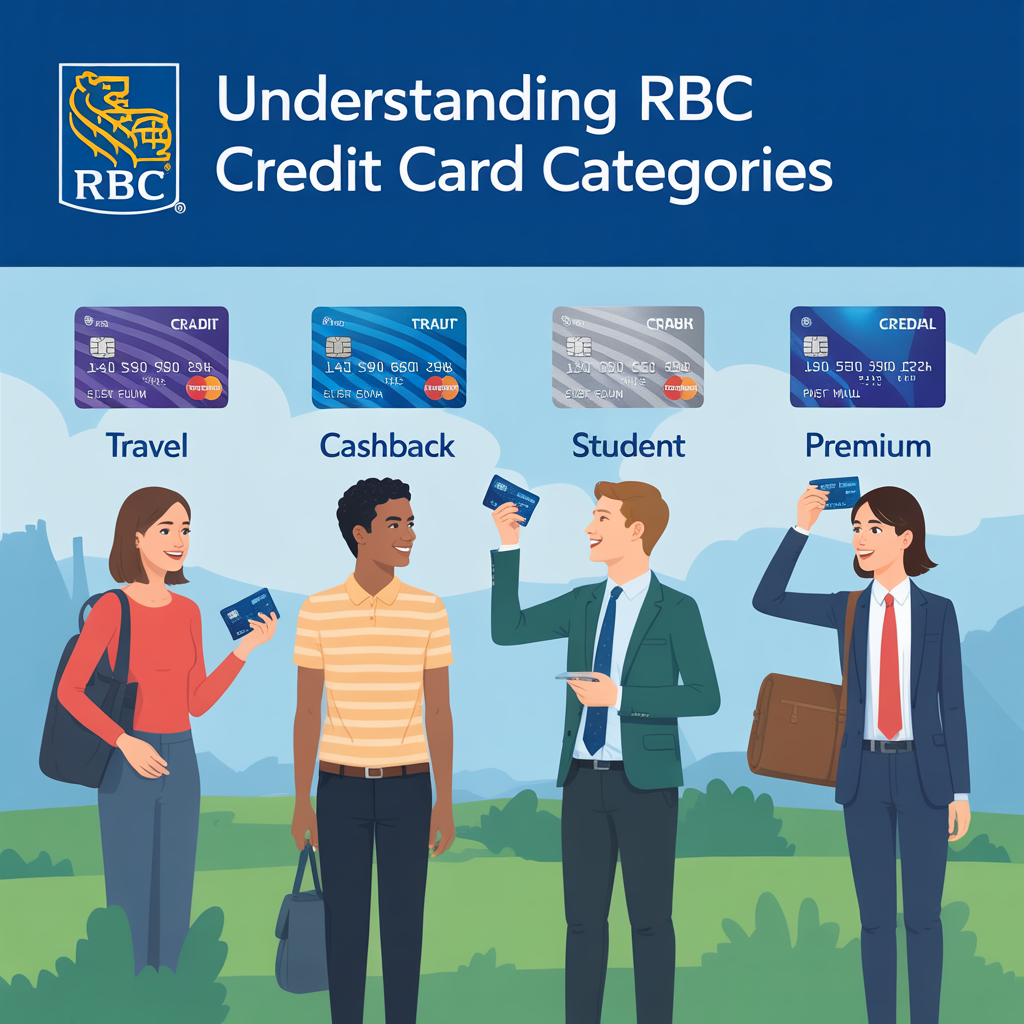
Here’s a deeper breakdown of card categories you’ll encounter when exploring how to apply for credit card RBC:
1. Rewards Credit Cards
RBC’s flagship reward program is Avion Rewards, where users earn points for each dollar spent. These points can be redeemed for a variety of things, including:
- Travel (flights, hotels, vacation packages)
- Retail products and electronics
- Gift cards to major brands (Amazon, Walmart, Uber)
- Paying down your credit card balance
- Donations to charitable causes
Notable cards:
- RBC Avion Visa Platinum
- RBC ION+ Visa
- RBC Avion Visa Infinite
2. Cash Back Cards
Want simplicity? RBC’s cashback cards let you earn a percentage of your purchases back.
Use cash back:
- To lower your monthly card balance
- Deposit into your RBC account
- Apply toward travel or shopping
Notable examples:
- RBC Cash Back Mastercard (no annual fee)
- RBC Cash Back Preferred World Elite Mastercard (higher rewards; annual fee applicable)
3. Student and Entry-Level Cards
Students need credit cards to begin building a credit score, but large fees and high limits can be overwhelming. RBC student cards offer:
- Lower limits
- No/minimal annual fees
- Flexible approval requirements
Notable examples:
- RBC Student Classic Visa
- RBC No-Fee ION Visa
4. Travel Credit Cards
Frequent flyers or road warriors can get extensive value from RBC’s travel cards, which offer:
- Airline points (WestJet, Avios)
- Trip insurance and coverage for lost baggage
- Perks like room discounts, exclusive bookings, and VIP events
Notable cards include:
- RBC Avion Visa Infinite
- RBC British Airways Visa Infinite
- RBC WestJet RBC World Elite Mastercard
5. Low Interest / Balance Transfer Cards
If you carry a balance or want to consolidate debt, these cards minimize your interest and help you save money while paying off what you owe.
Examples:
- RBC RateAdvantage Visa
- RBC Visa Classic Low Rate Option
Who Can Apply for an RBC Credit Card?
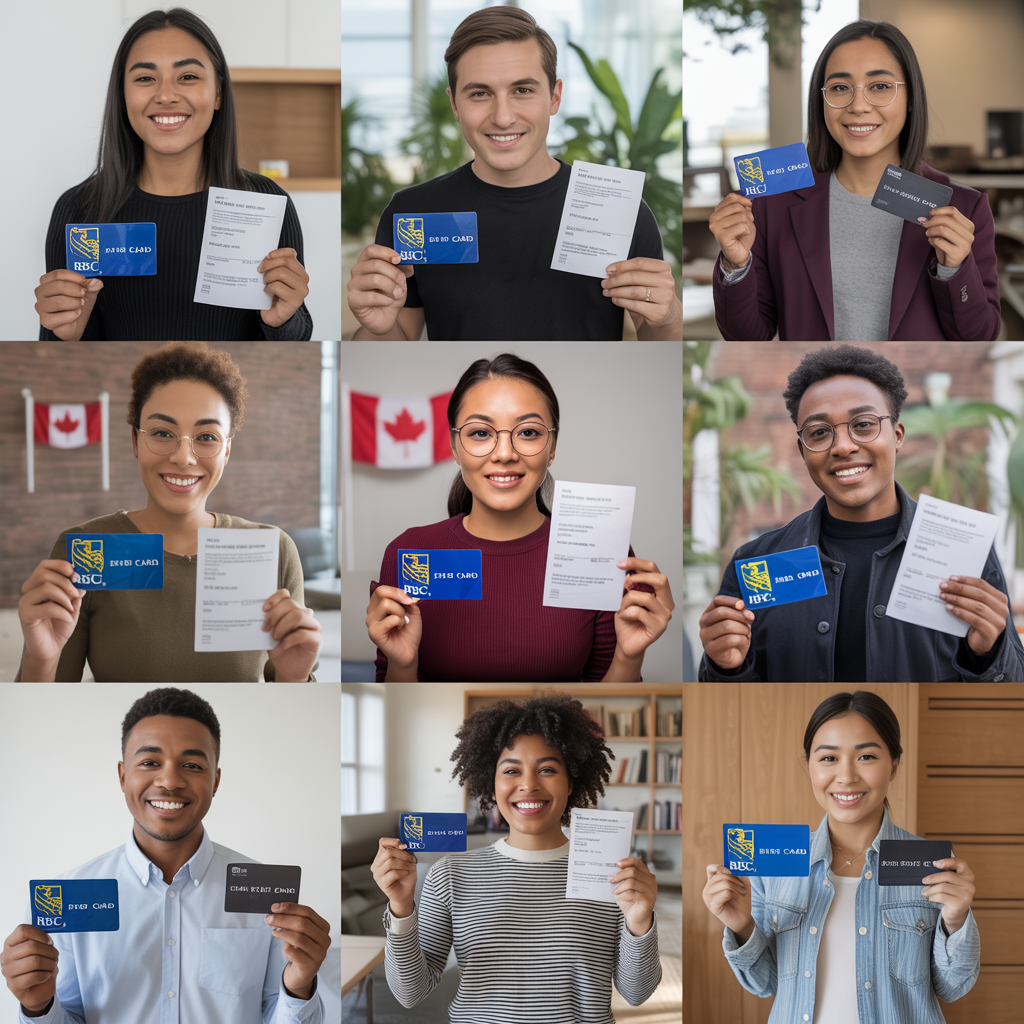
Before submitting the application, you should confirm you meet eligibility criteria. This helps avoid rejections and hard inquiries on your credit report that can lower your score.
Base Requirements
✅ Must be the age of majority in your province (18-19 depending on where you live)
✅ Must have a verifiable Canadian address
✅ Must have valid ID (passport, Canadian license, PR card, etc.)
Credit Score Requirements (Approximate)
| Card Type | Suggested Minimum Credit Score |
|---|---|
| Student/Starter Cards | 620+ |
| Basic Rewards or Cash Back Cards | 660+ |
| Premium Travel Cards | 700–750+ |
| Low-Interest / Balance Transfer | 650+ |
Tip: If your credit score is on the lower side or non-existent (e.g., newcomers, students), choose no-fee or secured cards as a starting point.
Income Requirements
| Card Type | Suggested Income | Notes |
|---|---|---|
| No-fee cards | None | Entry-level approvals |
| Mid-tier cashback/rewards | $15,000 – $40,000 | Income proof may be requested |
| Premium/travel cards | $60,000+ | Household income of $100,000+ |
You will generally need to prove source of income, especially for higher tier cards.
Documents You May Need
- Valid government-issued ID
- Proof of address (utility bill, lease agreement)
- Recent pay stub or employment letter
- SIN (optional, but helps with faster credit checks)
- Immigration/study/work permits (for international applicants)
- T4 slips, Notice of Assessment (for self-employed)
How to Apply for Credit Card RBC – Step-by-Step (All Methods)
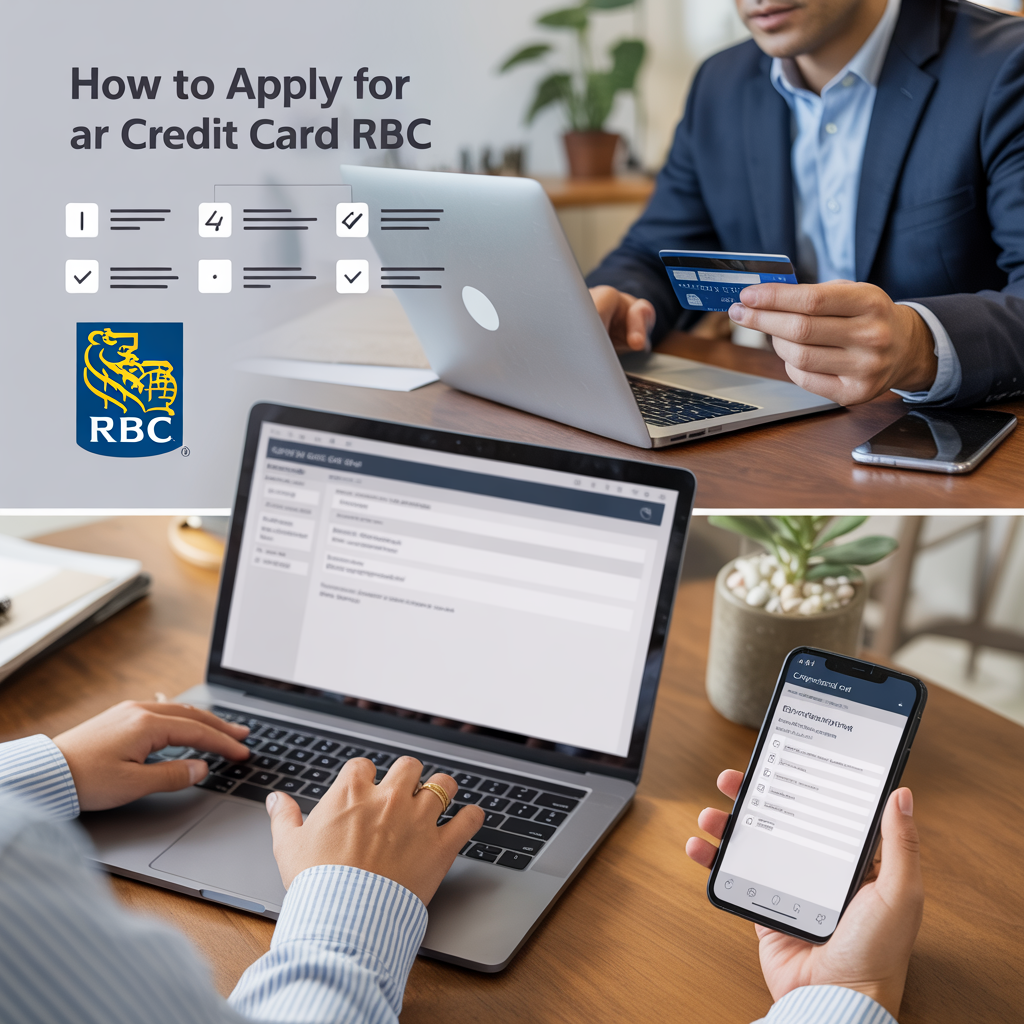
Now that you know your options and qualifications, let’s break down how to apply for credit card RBC in 2025 using various methods.
1. Apply Online (Fastest & Most Popular)
Most users choose online applications for speed and convenience.
How It Works:
- Choose a card and click “Apply Now”
- Fill in your name, address, income, employment status, and housing situation
- Consent to a credit check
- Submit!
You may get an instant response. If not, you’ll be emailed for more documents or given a time estimate.
Pros:
- 24/7 availability
- Fast decision
- Secure and digital
2. Apply In-Person at a Branch
This method is best if:
- You’re a newcomer or student without a Canadian credit score
- You want a personalized recommendation
- You’re applying for higher-end cards and want to present income proof directly
Just bring all your required documents and ID and speak to an advisor. They can help you apply on the spot.
3. Apply by Phone
Call RBC’s customer service or credit card department. A representative will request your information, guide you through the application, and help resolve complex questions.
Phone Line: 1-800-769-2512 (RBC Credit Card Customer Service – English)
Great for applicants who:
- Aren’t comfortable with online forms
- Have existing accounts and need quick verification
4. Apply Through RBC Online Banking (Existing Clients Only)
If you’re already an RBC customer:
- Log
- Navigate to Credit Cards → Apply Now
- Your personal info will be pre-filled!
- You may see pre-approved offers
This method is fast and increases approval chances due to your client history.
What Happens After You Apply?
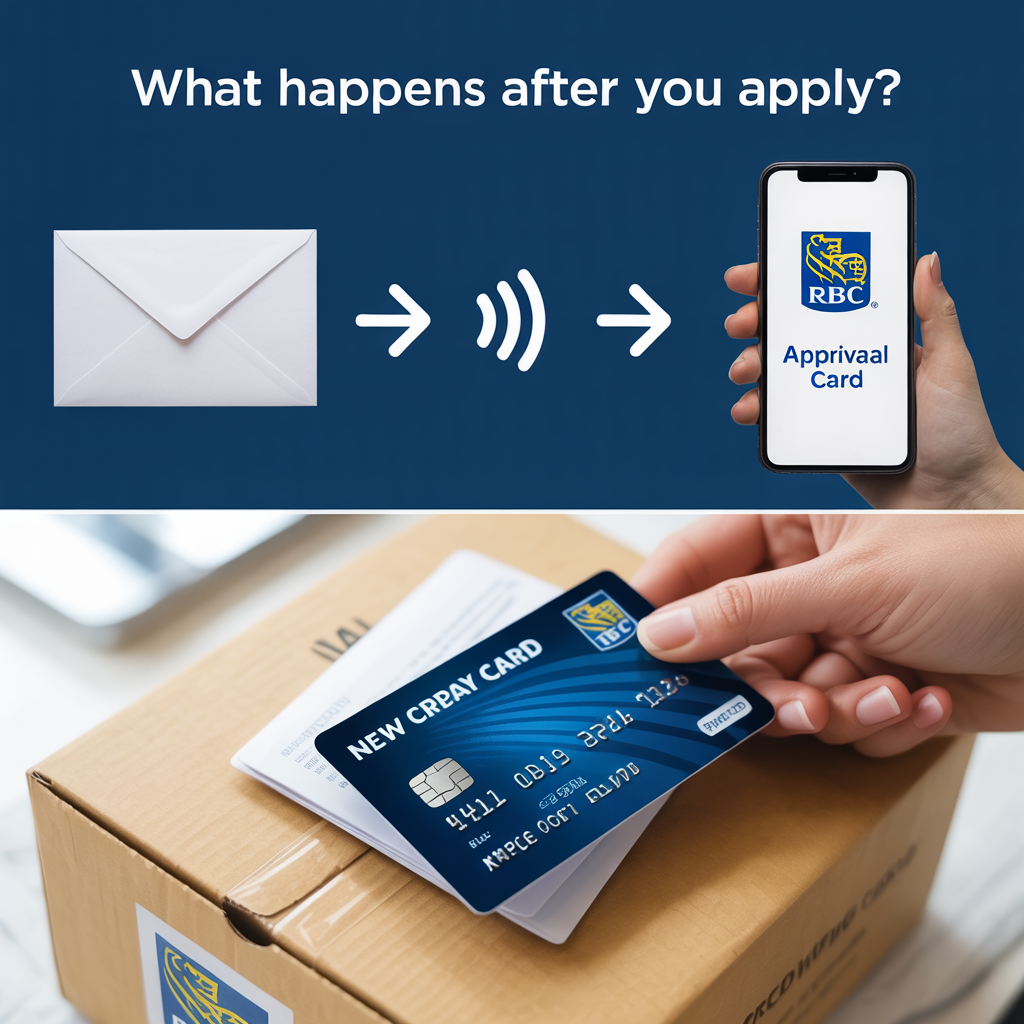
Once your application is in, what comes next?
1. Instant Approval
If everything checks out—credit score, income, eligibility—you may get approved immediately. You’ll see a congratulations screen and receive a confirmation email.
Your card will arrive in 5–10 business days.
2. Review Needed
Some applications go into manual review. Common reasons:
- Incomplete documents
- Verification required
- Borderline credit/income
- Newcomer profile without Canadian history
RBC may call/email to request additional papers.
3. Application Declined?
Common reasons include:
- Poor or insufficient credit score
- Too many recent credit applications
- High existing debt
- Low reported income
You can:
- Wait 3–6 months and retry
- Apply for another card with easier eligibility
- Start with a secured card to build credit
Tips to Get Approved When You Apply for an RBC Credit Card
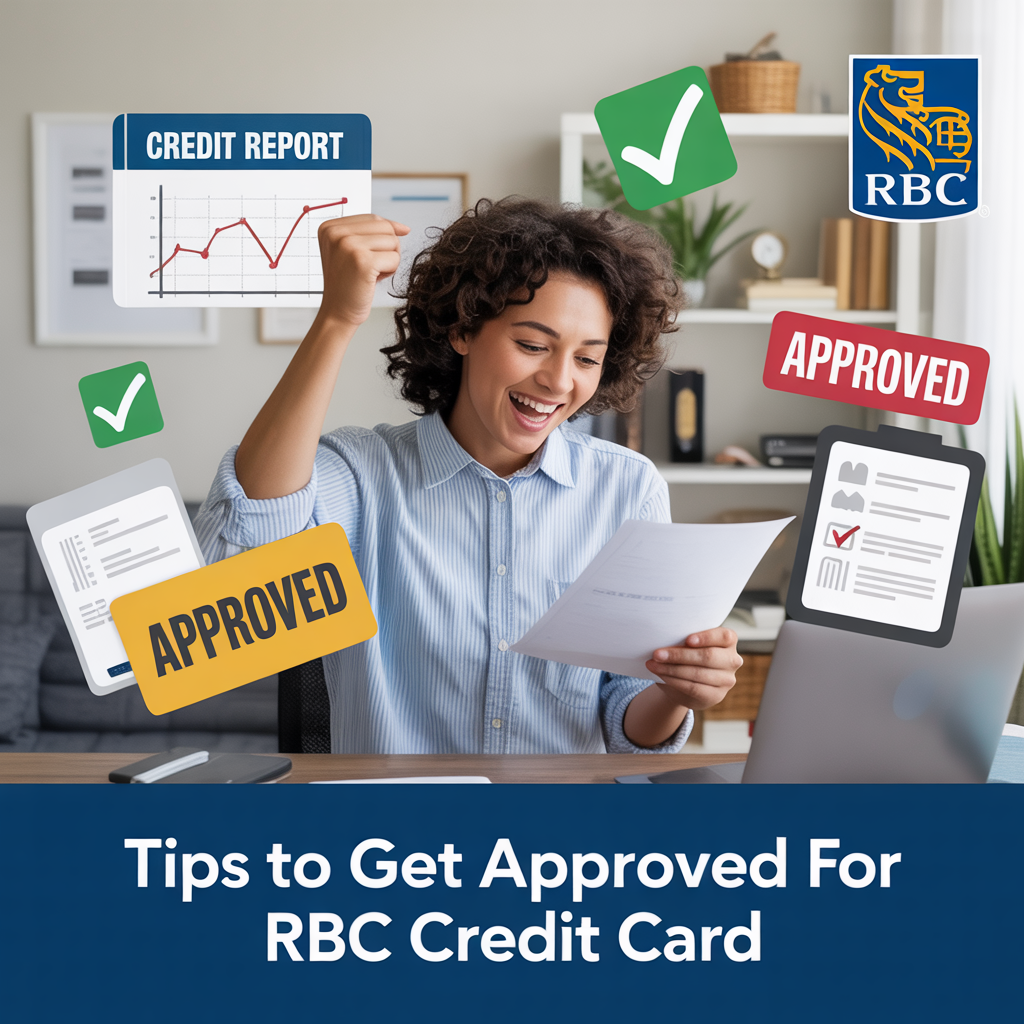
Successful applications go beyond filling in fields. Here’s what helps your approval odds:
1. Know Your Card’s Requirements
Read the fine print on required income, credit score, and annual fees. Only apply for cards where you meet 100% of the criteria.
2. Reduce Existing Debts
Your credit utilization ratio plays a huge role. Try to keep card balances under 30% of your credit limit.
3. Avoid Applying for Multiple Cards
Each credit application lowers your credit score slightly and creates inquiry marks. Stick to one application every few months.
4. Strengthen Supporting Documents
For self-employed or freelance workers, include:
- Signed client contracts
- 6 months of bank statements
- Business registration or incorporation documents
Real-Life Examples: How Canadians Apply Successfully
✅ Example 1: A Student in Ontario
Sarah is a 19-year-old college student in Toronto. She applies in-branch for the RBC Student Classic Visa, bringing her student ID, SIN, and school enrollment letter. The advisor helps with the application, and Sarah is approved with a $500 credit limit.
✅ Example 2: A Newcomer Professional
Ali recently moved from Nigeria and has a full-time job. Applying under the RBC Newcomers Program, he brings his PR card, job offer letter, and proof of address. He chooses the RBC Cash Back Mastercard, gets approved in 4 business days, and starts building his credit from zero.
✅ Example 3: Dual Card Strategy
Emily applies for the RBC Avion Visa Infinite as a frequent traveler. She gets approved online, then uses her online banking dashboard to also apply for the RBC Low Rate Visa, creating a two-card strategy: one for rewards, one for emergencies.
Key Takeaways:
- RBC offers cards for all financial situations: students, travelers, newcomers, professionals, and business owners.
- Know your eligibility and align it with the right-level product where you meet all qualifications.
- Gather your documents, understand the terms, and apply via the method that suits you best.
- Be careful not to overshoot your credit standing—start small and grow upward as your profile strengthens.
- RBC’s additional programs for newcomers, students, and partners can help increase your chances significantly if you qualify.
frequently asked questions
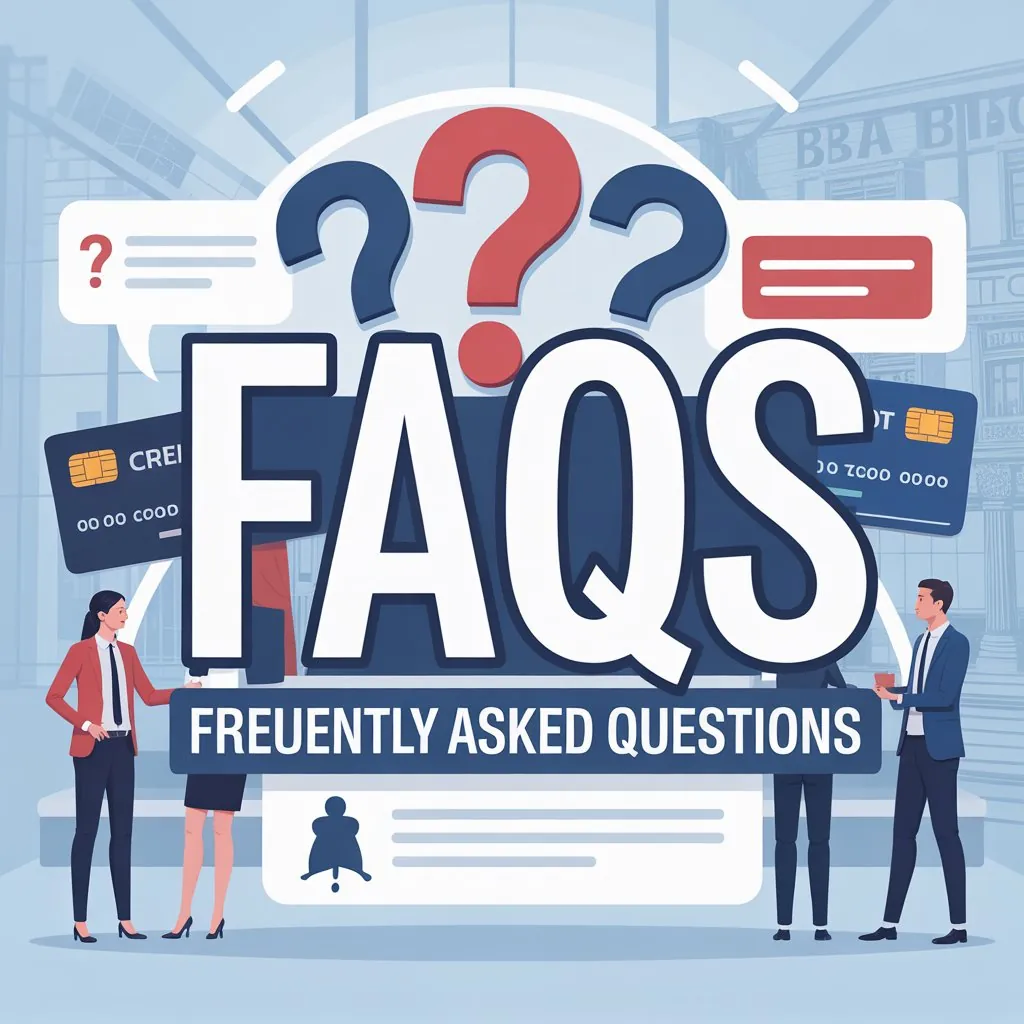
- How do I apply for an RBC credit card?
You can apply online via the RBC website, through RBC Online Banking or the Mobile App, by phone, or in person at any RBC branch. First, decide which card fits your needs using their selector tool, then follow the application steps specific to your chosen method. - When is my RBC credit card payment due?
Payment due dates vary by card. You can find your specific due date on your monthly credit card statement. For more details or to confirm, call RBC’s customer service. - What is the minimum payment on my RBC credit card?
The minimum payment is usually $10 plus any interest and fees, as indicated on your statement. If your total balance is less than $10, you must pay the full balance. The minimum amount may also include overdue amounts or any amount that exceeds your credit limit. Requirements may vary by card. - How can I make a payment on my RBC credit card?
You can pay online through RBC Online Banking, at an RBC branch, by phone, by mail, or at an RBC ATM. Automatic payments can also be set up for convenience. - What should I do if my credit card is lost or stolen?
Temporarily lock your card immediately via RBC Online Banking or the Mobile App. If the card is permanently lost or stolen, call RBC’s customer support to block your card and request a replacement. - How do I activate my new RBC credit card?
Activate your new card through RBC Online Banking, on their website, or by phone. For Private Banking credit cards, use the dedicated customer service number. Don’t forget to sign the back of your new card after activation.
conclusion
Whether you’re just beginning your credit journey or looking to upgrade your spending power and rewards, understanding how to apply for credit card RBC is the first critical step.